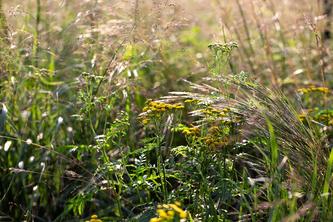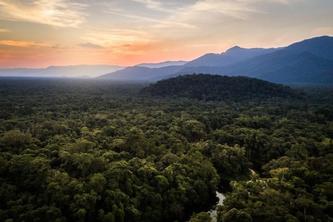
Published in the Proceedings of National Academy of Sciences, researchers in the Climate Intervention Biology Working Group — including Jessica Hellmann from the University of Minnesota Institute on the Environment — explored the effect of solar climate interventions on ecology.
Composed of climate scientists and ecologists from leading research universities internationally, the team found that more research is needed to understand the ecological impacts of solar radiation modification (SRM) technologies that reflect small amounts of sunlight back into space. The team focused on a specific proposed SRM strategy — referred to as stratospheric aerosol intervention (SAI)) — to create a sulfate aerosol cloud in the stratosphere to reduce a portion of incoming sunlight and radiation. In theory, this cloud could be controlled in size and location.
SAI is like placing tiny reflective particles in the atmosphere to bounce a portion of the solar radiation back to space, so that some of the radiation does not reach — and warm — Earth.
The team emphasizes that greenhouse gas emissions reduction and conservation of biodiversity and ecosystem functions must be the priority.
“We are just starting to consider the risks and benefits of geoengineering, and it’s critical that we include ecosystems in cost-benefit studies”, said Hellmann, director at the U of M Institute on the Environment. “We should only pursue geoengineering if its benefits strongly outweigh its downsides. Because our efforts to stem climate change are modest and slow, the case for considering geoengineering is growing, and this paper represents the ecologists chiming in to the geoengineering conversation.”
The complexity of cascading relationships between ecosystems and climate under SAI — in combination with the timing, amount, length and termination of SAI scenarios — means that SAI is not a simple thermostat that turns down the heat a couple of degrees. Other potential effects of SAI include shifts in rainfall and increases in surface UV rays. While SAI might cool an overheated Earth, it would not be able to counter all of the effects of rising atmospheric CO2, such as halting ocean acidification.
“When we approach complex questions like these, there is a broad scale, theoretical understanding of the inherent patterns of biodiversity across the surface of Earth, but this understanding is often informed by finer-scale experiments that test the biological and physical mechanisms underlying those patterns,” said Phoebe Zarnetske, study co-lead and an associate professor in Michigan State University’s Department of Integrative Biology and the Ecology, Evolution, and Behavior program.
"I hope the paper can convince ecologists that research about nature's responses to solar geoengineering is not just important, but also interesting — touching on core ecological questions about topics as varied as photosynthesis and animal migration," said U of M alum Shan Kothari, who contributed to the study during his time at the College of Biological Sciences before going to the University of Montreal.
Kothari said that an example of how other scientists can consider the study's findings is to contemplate the unique conditions resulting from solar geoengineering scenarios that may aid or impede the ability for ecosystems to store carbon. He added that such research could help the international community consider solar geoengineering with a stronger awareness of the potential risks and benefits involved.
The study’s co-lead is Jessica Gurevitch, an ecologist at Stony Brook University in New York. This research was funded by the National Science Foundation.
- Categories:
- Agriculture and Environment
- Climate Change
- Earth Sciences





